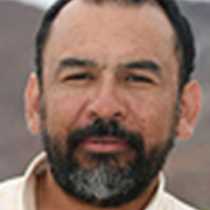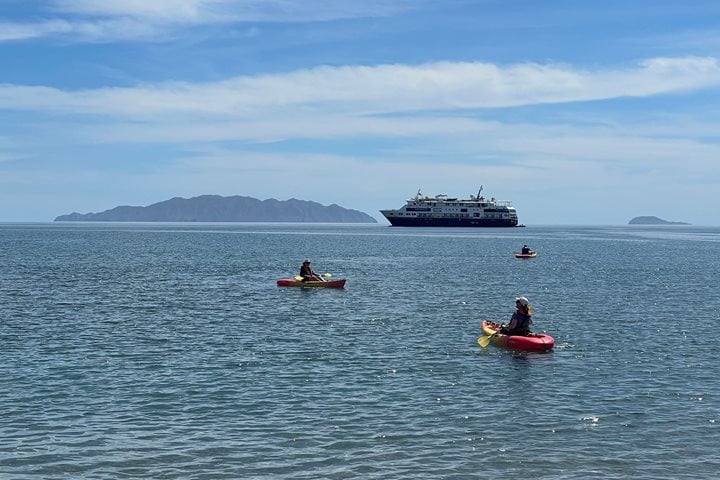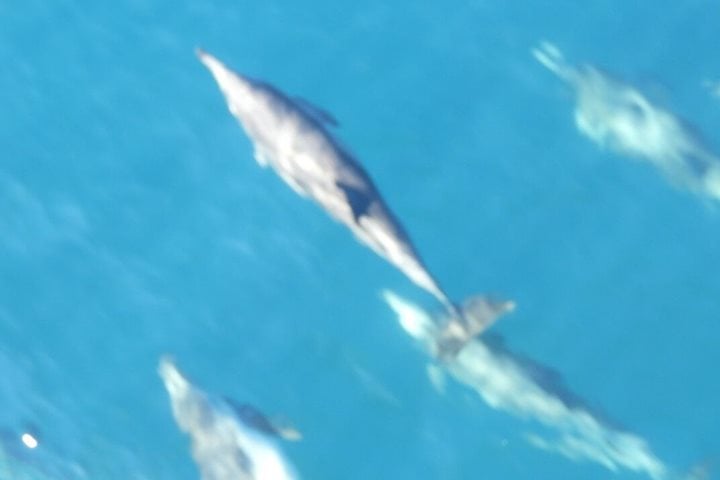Today an early wakeup call by the expedition leader announced that a pod of long-beaked common dolphins were diving around National Geographic Sea Bird. It was interesting to see a couple hundred of these magnificent marine mammals concentrated on feeding, as we derived by their behavior. Simultaneously, our naturalists found a blow from a 45-foot-long Bryde’s whale, also called tropical whale, showing an erratic, unpredictable pattern of movement. After a time with these marine mammals, the ship moved to our morning destination, a place called Los Islotes. A group of little volcanic islets compose Los Islotes, which holds a breeding (not at this time) colony of California sea lion, the only resident pinniped in the Gulf of California. In this locality our guests and staff snorkeled amongst the baby sea lions, born in the last mating season, but once or twice there were also big males (beach masters) diving around us. After the snorkeling, we all took cruises on the expedition landing craft around the place to get another perspective of the animals. Frigatebirds, blue-footed boobies, brown pelicans, turkey vultures, and a peregrine falcon were observed above Los Islotes as well.
In the afternoon, National Geographic Sea Bird sailed along the eastern side of Espiritu Santo Island to Bonanza Bay. More dolphins, mobula rays, and another Bryde’s whale were also found and observed in the vast, quiet, blue Sea of Cortez. Once at Bonanza Bay (a long, beautiful beach of fine sand, part of Espiritu Santo Island) our guests hiked, snorkeled, and went standup paddleboarding and kayaking. This location was the perfect finale to a journey that took us from the quiet, protected waters of the Magdalena coastal lagoon, in the Pacific side of the peninsula, to the Gulf of California, full of other natural treasures.







